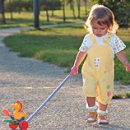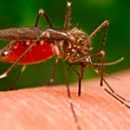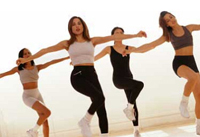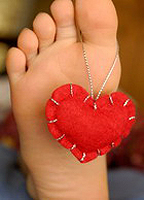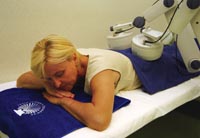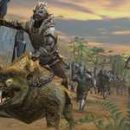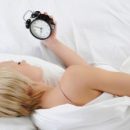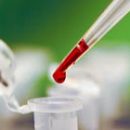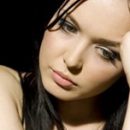The problems of the posture disorders today are relevant for almost all children, and especially for schoolchildren. So that this problem does not touch your child, I would like to draw the attention of parents to the most important moments of the formation of posture. We hope that the proposed material will help you to consult a doctor.
Content
What is spine?
Parents often do not pay attention to posture
child - after all, the baby does not complain about. Rather, he can complain
for anything: headaches, increased fatigue, bad memory.
But few know that all these disorders are caused by the state
Spine.
Spine is the most complex design. The vertebra is made up
The basis, intervertebral cartilage, joints of vertebral processes and a binder
The device fastens vertebrae, muscles provide stability
and the mobility of the spine.
Spine is:
- hard rod that supports the torso, head and belt of the upper extremities;
- Reliable support of all levers from bones and muscles, which provide any movement of the body and limbs;
- lasting
At the same time, the spine is:
- Flexible chain, which allows the torso to bend and rotated;
- Elastic spring, which extinguits blows and push and holds the balance of the body.
All these features are interconnected: the spine must be moving,
As far as it is possible, sustainable, as far as necessary, and
Fasten enough to withstand static and dynamic loads.
And the loads of the spine exposed constantly because
Literally in every movement: And when walking and at any movement of the head
or limbs to the central axis of the body are dynamic
Load. In addition, the spine experiences almost constantly
Static loads. Maintain a certain position of the body
We have not only standing, but also sitting or when working in the slope.
And flexibility, and the rigidity of the spine are provided by its joints and
Bound apparatus. Front and rear longitudinal bundles, bundles
Intervertebral joints and articular bags must be enough
elastic to provide the required volume of spinal movement,
and strong enough to prevent damage when driving
Big amplitude. Even minor damage to bundles in injuries,
sharp movements, excessive loads over time gradually lead
to limit the mobility of the spine.
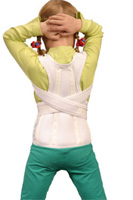
Movement in the spine, as in a complex system of hinges, occur
with «Bearings» - Intervertebral discs and cartilage joints,
educated by the neighboring vertebrae. On cartilage «Bearings»
Move and attached to the spine ribs, and clavicle, and head.
The spine works and as a system of shock absorbers that are quenched
Vertical loads. Boots directed along the vertical axis of the body,
occur at every step or jump. Without reliable springs, the whole body, in
including brain, would have received permanent concussions. Spring
The function is carried out at the expense of elastic intervertebral cartilage and
Availability of physiological (natural) bends of the spine - Lordozes
and kyphosis. Lordosis is called the bending of the spine, addressed
convex ahead, and kyphosis - convex. Wavely shape
The spine helps to absorb vertical loads.
Muscles surrounding the spine provide two opposite
Functions - mobility and stability. Mobility in each
Intervertebral joint separately is small, but the spine as a whole
- Enough flexible system. Muscle coordination provides
Harmonious spine movements.
The main role in preserving the vertical posture is played by the back muscles,
straightening spine, and iliac lumbar muscles. For
The stability of the spine is very important and peculiar hydraulic
Supports - pressure in the chest and abdominal cavities. Abdominal muscles
have no less important to hold the posture and protection of the vertebrae from
displacements and injuries than muscles back. Muscular thrust forms bends
spine, stimulates its normal development. Well developed
Muscle corset is able to protect the spine from traumatic loads.
Muscle tone disorders occur with any problems in
Spine. Muscle corset weakness, uneven muscle tone
inevitably associated with the strengthening or flattening of physiological bends
spine either his lateral curvature. All this leads to
Increasing the load on intervertebral discs.
Between «simply» There are no violations of posture and diseases of the spine. A typical example of such a transition state - the instability of the spine.
Weak muscles and ligaments are not able to hold the vertebrability when driving,
Slugged posture leads to increased pressure on intervertebral discs, and
At the same time, youthful osteochondrosis develops, which differs from «ordinary» Only age of patients.
Definition «usual», However, it would be possible not to put in
quotes, and use in the literal sense, for, according to
medical statistics, from 40 to 80% of all residents of the globe
Suffer osteochondrosis. Approximately every third person older than
Complaints on back pain or headache associated with osteochondrosis.
Thus, the two most common misfortunes associated with
spine, - disorders of posture and osteochondrosis - this links of one
Chains. And since there is no disease of the spine, which is not
would affect all other organs and systems of the body, then you can
say that the vertebral pole is really «Post health».
What is posture and what good posture is different from bad?
Give a short formulation of posture difficult. The most common I
Simple definition sounds like this:
the person he takes without excessive muscle tension». IN
Wide mention of the posture is and the position of the body in various
static poses, and features of muscle work when walking and
performing various movements. But determine what a man is posture,
during dance, work and just walking too difficult, so when
Evaluation of posture and diagnostics of its violations are used by the characteristics of postures
standing. The posture depends primarily on the form of the spine.
Violations of the posture themselves are not illness, but they create
conditions for the disease not only spine, but also internal
organs. Poor posture is or extension of the disease, or condition
Presense. The main danger of posture disorders is that
this does not hurt anything until degenerative
Changes in intervertebral disks (osteochondrosis).
Even such a serious illness, as scoliosis, until time flows without pain.
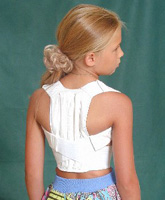
Poor posture reduces the reserve of the body's strength: the heart beats in
cramped chest, savory chest and turning the shoulders forward do not give
Plane light, and the stomach dismisses a normal position
Abdominal organs. Reducing physiological bends
spine (flat back), especially in combination with flatfoot,
leads to permanent microtrams of the brain and increased
fatigue, headaches, memory violations and attention.
Most often bad posture is combined with poor muscle development and
reduced common tone of the body, with impaired due to improper
Head positions with blood cerebral brain, weak vision.
Causes and investigations here are difficult to divide. Myopia can
develop from habits to slouch - and vice versa, bad eyesight often
becomes the cause of bad post. The habit of huddling can
provoke a start of scoliosis or youth kyphosis, especially when
availability of metabolic disorders in connective tissue, or exchange
Violations may initially cause degeneration of intervertebral discs and bodies
vertebrae, and the posture disorders caused by this
irreversible.
Typically
«Children's» Spinal Diseases - Youth Kyphos and Scoliosis- are considered systemic (i.e. general) diseases that often
accompanied by violations of metabolism. This is true, but in
so many cases these diseases can be not warned, then at least
don't give them progress.
With proper posture, all parts of the body are located symmetrically
relative to the spine, there are no turns of the pelvis and vertebrae in
horizontal plane and spinal bends or oblique location
The pelvis - in the front, the awesome vertebral processes are located
middle line back. Body gravity projection with good posture
located within the area of support formed by footsteps, about
Lines connecting the front edge of the ankle.
Body proportions with age are changing: the relative size of the head
decreases the limbs - increases and t. D. Therefore, sustainable
Vertical body position in various age periods is achieved
Due to the different interpordability of parts of the body and different muscle efforts,
Supporting torsing. Proper posture from a preschooler, schoolchild, and
Also, the young men and girls differ during puberty.
Normal posture of preschooler
Chest symmetrical, shoulders do not protrude the klyona, blades
Slightly protrude back, the stomach is issued forward, legs straightened,
Scheduled lumbar lordosis. Ostial vertebral processes are located
in the middle of the back.
Normal posture of schoolboy
Shoulders are horizontally, the blades are pressed to the back (not
stand). Physiological bends of the spine are expressed moderately.
Abdominal absorption decreases, but the front surface of the abdominal wall
Located Kechadi from the chest. Right and left half of the body
When inspection in front and behind symmetrical.
Normal posture of youth and girls
Ostial processes are located in the midline, legs are straightened,
The bumps are lowered and are on the same level. Blades pressed to back.
Chest symmetrical, dairy glands in girls and nipples in the young men
Symmetrical and are on the same level. Triangles waist (lumens
between hands and torso) are well noticeable and symmetrical. Stomach flat,
drawn in relation to the chest. Physiological bends
The spine is well pronounced, the girls will emphasize the lumbar lordosis,
Youth - Chest Kyphoz.
With violations of posture of the muscles of the body weakened, so take
the correct posture of the child can only briefly. In healthy, harmoniously
Developed people Youth posture persists to deep old age.
The simplest test for the correctness of the posture - stand back to the wall without
Plinth. The head of the blades, buttocks, the calves muscles and heels must
Concern the wall. Distance between the wall and body in the area of the cervical and
Lumbar Lordozes - approximately 2-3 fingers.
A small asymmetry of the body is each, but if the disorders of the posture
noticeably expressed, and even more so if they progress, it's time to go to
doctor. And even better not to correct posture, but make efforts for it
Proper formation.

